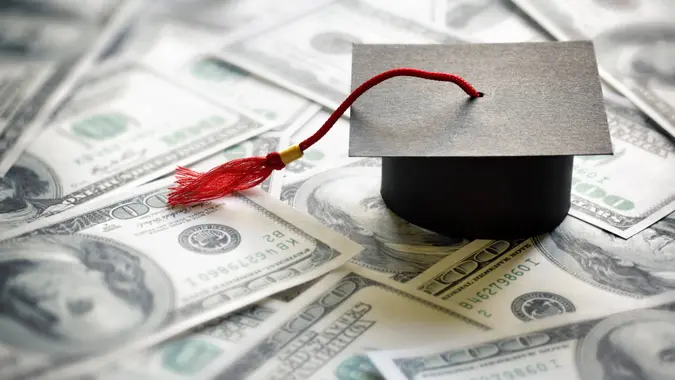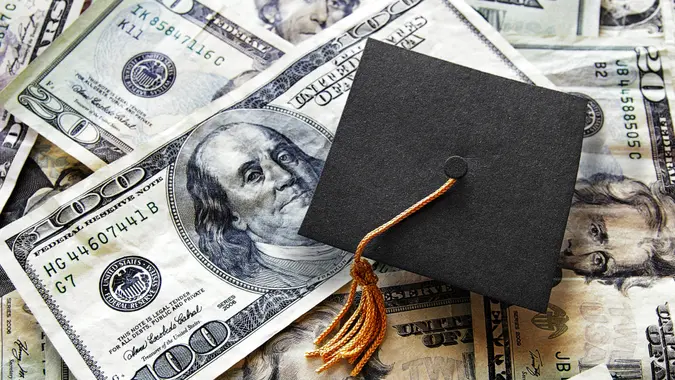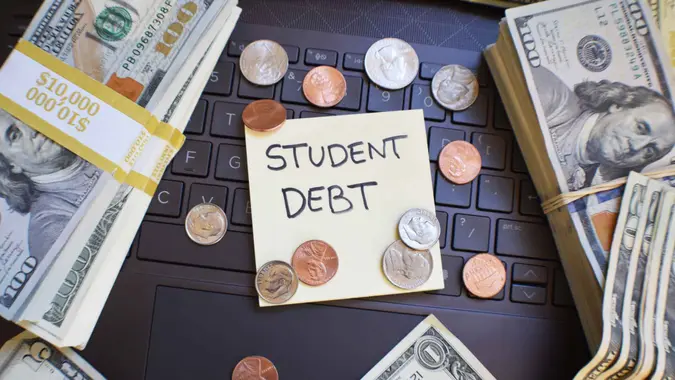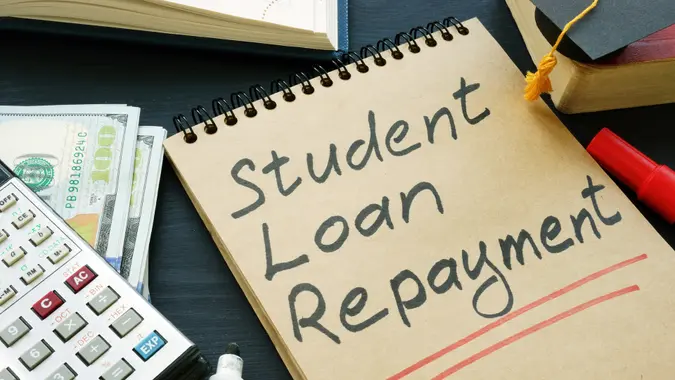Republicans Propose Sweeping Changes to Student Loans — Here’s How They Can Impact Your Wallet

Commitment to Our Readers
GOBankingRates' editorial team is committed to bringing you unbiased reviews and information. We use data-driven methodologies to evaluate financial products and services - our reviews and ratings are not influenced by advertisers. You can read more about our editorial guidelines and our products and services review methodology.

20 Years
Helping You Live Richer

Reviewed
by Experts

Trusted by
Millions of Readers
Student loan debt is the bane of existence for tens of millions of Americans today.
According to the Education Data Initiative, about 42.7 million Americans have federal student loan debt, and the current outstanding balance totals approximately $1.69 trillion. Federal student loan debt makes up 92.2% of all student loan debt in the U.S., with the average balance per borrower being $38,375.
The figures are staggering and for so many Americans saddled with student loan debt, it might just get a whole lot more difficult very soon. Here’s how things are going to change.
U.S. Department of Education To Begin Collections on Defaulted Student Loans
The U.S. Department of Education reported that as of May 5, the Office of Federal Student Aid (FSA) resumed collections of defaulted federal student loans. The Department has not collected on defaulted student loans since the onset of the COVID-19 pandemic in March 2020.
“American taxpayers will no longer be forced to serve as collateral for irresponsible student loan policies,” said U.S. Secretary of Education Linda McMahon.
On top of this, Republicans in Congress are working hard to pass legislation that will overhaul student aid as we know it.
Republicans Are Planning To Overhaul Federal Student Aid
USA Today reported that the Republican-controlled Congress is marching ahead to pass a bill that will completely overhaul federal student aid. If passed, the new bill from the GOP-led Committee on Education and Workforce in the House of Representatives would effect sweeping changes and have consequential outcomes for students, including:
- Fewer regulations on for-profit universities
- Reducing undergraduate student Pell Grant eligibility
- Potentially higher student loan payments for millions of Americans
The idea here is to save American taxpayers billions of dollars while overhauling a dysfunctional and supposedly broken federal student aid system. However, it’s also believed that if passed, this bill will hurt students, particularly those from low-income and disadvantaged backgrounds.
Additionally, if new course load requirements are implemented, lower-income students who can’t meet the minimum threshold could see their Pell Grants effectively disappear. If it becomes even more difficult to pay for the rising cost of college, more Americans may be deterred from pursuing a higher education altogether.
It remains to be seen if this bill will pass, but today the fate of millions of American students remains in the hands of a GOP-controlled Congress.
Sources:
- Education Data Initiative, “Student Loan Debt Statistics“
- U.S. Department of Education, “U.S. Department of Education to Begin Federal Student Loan Collections, Other Actions to Help Borrowers Get Back into Repayment“
- USA Today, “Republicans propose massive overhaul of student loans, Pell Grants“
- Committee on Education and Workforce, “TITLE III–COMMITTEE ON EDUCATION AND WORKFORCE Subtitle A–Student Eligibility“
 Written by
Written by  Edited by
Edited by 
























